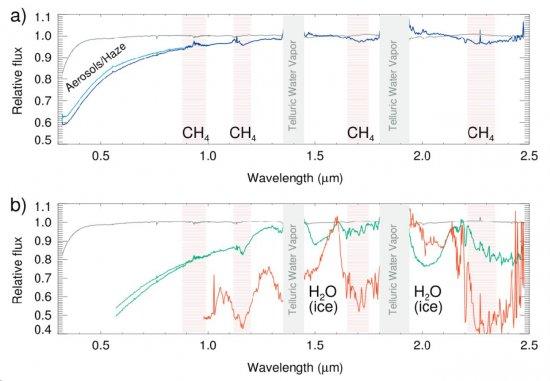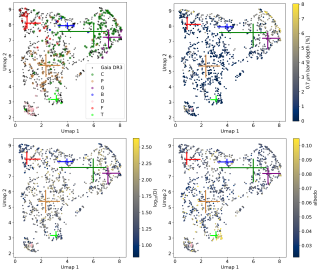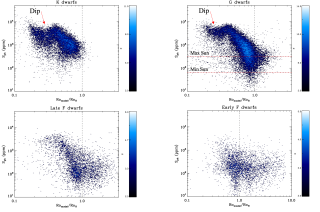Currently, the analysis of transmission spectra is the most successful technique to probe the chemical composition of exoplanet atmospheres. However, the accuracy of these measurements is constrained by observational limitations and the diversity of possible atmospheric compositions. Here, we show the UV-VIS-IR transmission spectrum of Jupiter as if it were a transiting exoplanet, obtained by observing one of its satellites, Ganymede, while passing through Jupiter's shadow, i.e., during a solar eclipse from Ganymede. The spectrum shows strong extinction due to the presence of clouds (aerosols) and haze in the atmosphere and strong absorption features from CH4. More interestingly, the comparison with radiative transfer models reveals a spectral signature, which we attribute here to a Jupiter stratospheric layer of crystalline H2O ice. The atomic transitions of Na are also present. These results are relevant for the modeling and interpretation of giant transiting exoplanets. They also open a new technique to explore the atmospheric composition of the upper layers of Jupiter's atmosphere.
Figure caption: The transmission spectrum of Jupiter during the penumbra (a) and the umbra (b)phases. Gray shaded regions mark the deeply absorbed telluric bands of H2O, which cannot be observed from the ground. The locations of the major CH4 absorption b
Advertised on
References



